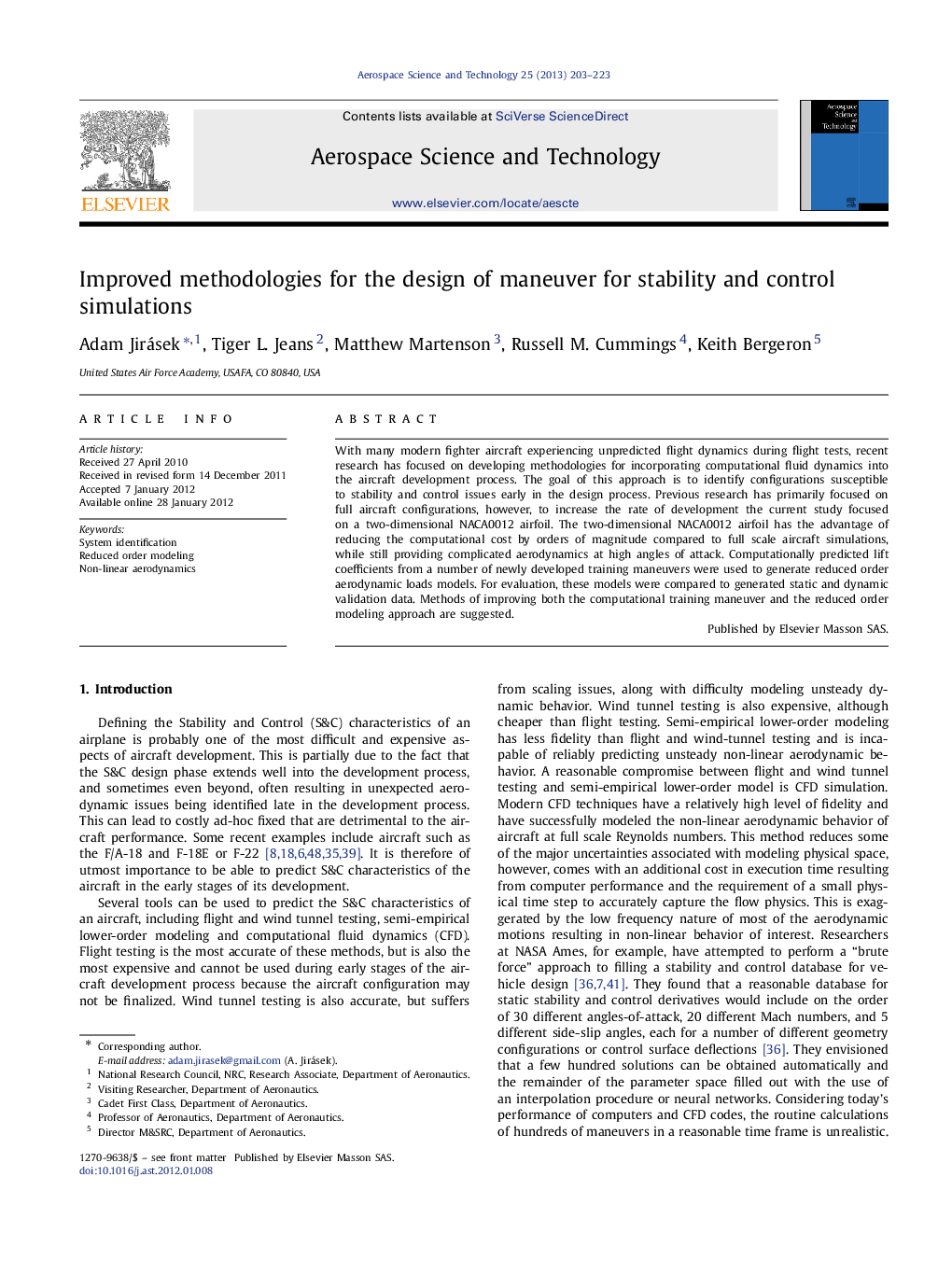| Article ID | Journal | Published Year | Pages | File Type |
|---|---|---|---|---|
| 1718243 | Aerospace Science and Technology | 2013 | 21 Pages |
With many modern fighter aircraft experiencing unpredicted flight dynamics during flight tests, recent research has focused on developing methodologies for incorporating computational fluid dynamics into the aircraft development process. The goal of this approach is to identify configurations susceptible to stability and control issues early in the design process. Previous research has primarily focused on full aircraft configurations, however, to increase the rate of development the current study focused on a two-dimensional NACA0012 airfoil. The two-dimensional NACA0012 airfoil has the advantage of reducing the computational cost by orders of magnitude compared to full scale aircraft simulations, while still providing complicated aerodynamics at high angles of attack. Computationally predicted lift coefficients from a number of newly developed training maneuvers were used to generate reduced order aerodynamic loads models. For evaluation, these models were compared to generated static and dynamic validation data. Methods of improving both the computational training maneuver and the reduced order modeling approach are suggested.
